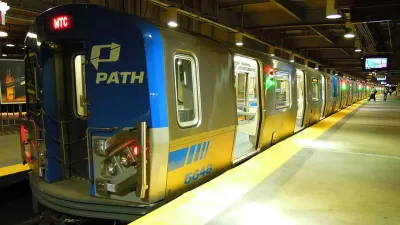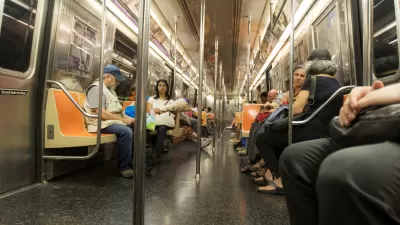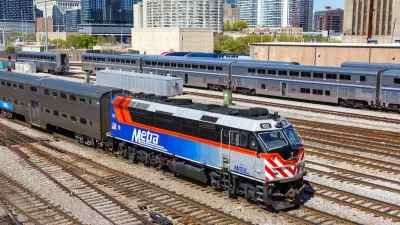In cities like New York where multiple transit operators serve the same travelers, nothing compels those operators to work together. This isolation can result in embarrassing inefficiencies.

For systems that ostensibly serve the public, many transit agencies can't—or won't—work together when the situation encourages it. When PATH closed a section of its network this month, it chose "to shuttle its passengers rather than take advantage of existing New York City Transit Subway services, giving them vouchers to use on the buses instead of working with the MTA to let riders take advantage of the trains it is running."
Yonah Freemark suspects that the systems see themselves in competition with each other. "What's ironic about this arrangement, of course, is that both PATH and the New York City Subway are run by public agencies (supposedly) serving in the public interest and receiving public subsidies to operate and construct projects."
Freemark estimates the total cost of shuttling PATH passengers at $720,000 to $930,000. "It would be cheaper for both transit systems overall for the MTA to simply absorb the transferring PATH riders during the weekend shutdowns."
The real problem may be political. "A better grasp on what regional goals are for transit networks in general, and a commensurate focus by elected officials on telling agencies what to do, rather than letting agencies operate in isolated fiefdoms, would aid American transit riders."
FULL STORY: The boundaries that divide our transit systems

Alabama: Trump Terminates Settlements for Black Communities Harmed By Raw Sewage
Trump deemed the landmark civil rights agreement “illegal DEI and environmental justice policy.”

Planetizen Federal Action Tracker
A weekly monitor of how Trump’s orders and actions are impacting planners and planning in America.

The 120 Year Old Tiny Home Villages That Sheltered San Francisco’s Earthquake Refugees
More than a century ago, San Francisco mobilized to house thousands of residents displaced by the 1906 earthquake. Could their strategy offer a model for the present?

In Both Crashes and Crime, Public Transportation is Far Safer than Driving
Contrary to popular assumptions, public transportation has far lower crash and crime rates than automobile travel. For safer communities, improve and encourage transit travel.

Report: Zoning Reforms Should Complement Nashville’s Ambitious Transit Plan
Without reform, restrictive zoning codes will limit the impact of the city’s planned transit expansion and could exclude some of the residents who depend on transit the most.

Judge Orders Release of Frozen IRA, IIJA Funding
The decision is a victory for environmental groups who charged that freezing funds for critical infrastructure and disaster response programs caused “real and irreparable harm” to communities.
Urban Design for Planners 1: Software Tools
This six-course series explores essential urban design concepts using open source software and equips planners with the tools they need to participate fully in the urban design process.
Planning for Universal Design
Learn the tools for implementing Universal Design in planning regulations.
Clanton & Associates, Inc.
Jessamine County Fiscal Court
Institute for Housing and Urban Development Studies (IHS)
City of Grandview
Harvard GSD Executive Education
Toledo-Lucas County Plan Commissions
Salt Lake City
NYU Wagner Graduate School of Public Service





























